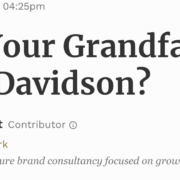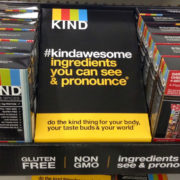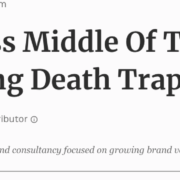A walk through the market research trade press is a frightening experience. The articles are paeans to technology and proprietary methodologies. If we can quantify something, it must be actionable. It is a love affair with marketing numerology.
Market research has split into two groups: the academics who publish statistical articles in technical journals. (To read these, you need a degree in statistics and familiarity with an obscure academic language.) And the marketing numerologists, who believe in some kind of magical relationship between their mystical techniques and some measure of marketing effectiveness. In both cases, producing numbers is the goal. We learned as children that correlation does not mean causality. However, the numerologists love correlations.
Data hyping by the numerologists underlies the poor research reporting we regularly see. In one recent article, on the relationship between video ads on social media and purchase, the researchers concluded that all brands should use video ads. Why? 54% of the sample who watched a video ad also went to the brand’s website. The researchers exclaimed, “Yes, that’s over half.” True, but only by 4 percentage points. And, it means that almost half, 46% did not. In other words, the odds that a viewer of the video ad also bought the product are the same as the flip of coin. It does not follow that viewing a video ad increased the probability of a purchase. It could also be the other way around. Or, one could have nothing to do with the other. Just because you can produce a number does not make it a relevant insight. The researchers were ecstatic that 28% of respondents watched the video ad and then claimed to buy the product.
Just because it is based on numbers does not make misleading, misinterpreted observations actionable. If we produce a number, it must be true. Or, if we produce a number it must be news. Much market research is merely observation of the obvious. In an article on finding the best ways to reach Millennials, the first recommendation based on data, was “Don’t Overgeneralize.” Really? Supported by data, they observe that all Millennials are not the same age. People born in the mid-1980s are at least 10 to 12 years older than those born in the mid-1990s. Wow! What an insight!
The battle for numbers is supported by the battle for proprietary models and methods. One firm claims that it provides unmatched sensory testing including eye tracking. Another states that it generates ideas from the “squeezing” of behavioral science and cultural anthropology. There is fascination today with something called neuromarketing. Neuromarketing is the application of neuroscience to marketing research to study our sensorimotor, cognitive, and affective responses to marketing communications. Neuromarketing uses technologies such MRIs EEGs, and Steady state topography (SST) to measure brain activity changes in physiological state (biometrics – heart rate, respiratory rate, and galvanic skin response), and something called facial coding (did your face show emotion when you saw the pizza). Market researchers are fascinated with the latest new technology, the latest new equations, and the latest new, bright, shiny methodology.
Not everything that is important is quantifiable and not everything that is quantifiable is important. Some numerologists at Facebook have created “trustworthiness” measure that will rank news feeds. There has already been withering criticism of this measure. Furthermore, Facebook says they are also developing a metric to help advertisers assess brand success on Facebook. When an analyst questioned Mr. Zuckerberg about the metric, he responded:
“The thing that we’re going to be measuring is basically the number of interactions that people have on the platform and off because of what they’re seeing that they report to us as meaningful.”
As Bloomberg commented, “Good luck putting that into a spreadsheet.” And, “It is remarkable that a company as data-driven as Facebook would gauge success based on qualitative user surveys.” Given the desire for a magical number, Facebook must have hired a group of marketing numerologists.
The love of numbers as evidence of truth, has led to an over-reliance on numbers however they are derived. Marketing numerology is contributing to an over-reliance on numbers over judgment in making creative decisions. People interpret, question, evaluate, simplify, clarify, examine, illuminate, imagine, create. Decisions should be informed by evidence. But, the evidence does not make the decision. People do.




